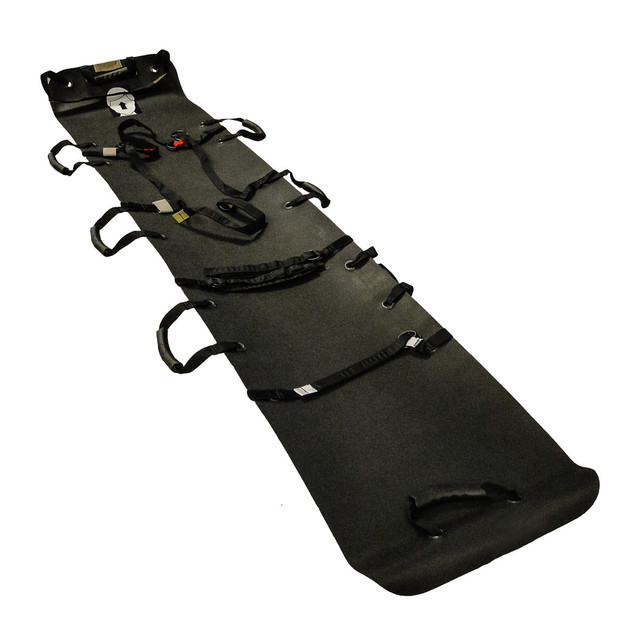Medical splint for immobilisation: types, purpose and rules of use
Content
- Types of splints for immobilisation
- Kramer wire splint
- Dieterichs splint
- Pneumatic tyres
- Basic rules for applying splints to limbs
- Improvised immobilisation equipment
- Conclusion
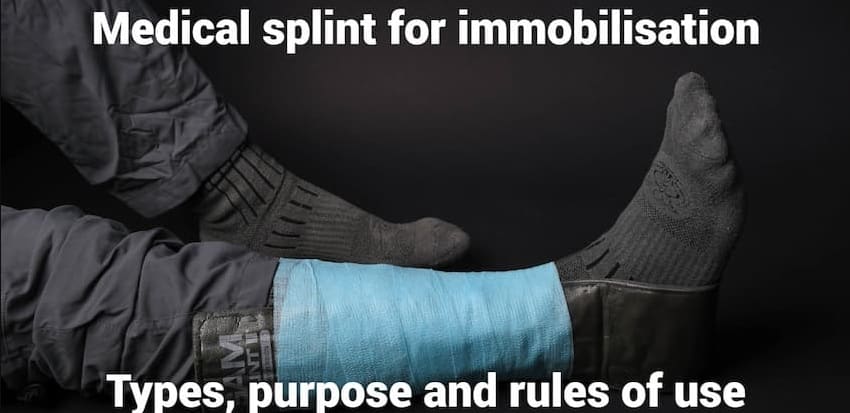
Immobilisation splints are an important tool in the provision of first aid for injuries of the limbs, spine or other injuries.
Their main function is to fix the injured area, prevent further complications and reduce the patient's pain until professional medical care is available. In modern medicine, there are many types of splints, each designed for specific situations and types of injuries.
In this article, we will look at the main types of medical splints, their purpose and rules of use. You will learn how to choose the right splint depending on the nature of the injury, as well as get useful tips on how to use this indispensable element of medical practice. We recommend that you familiarise yourself with the different dressings that can be used with your splints to ensure the best possible protection and comfort for your patient.
Types of splints for immobilisation
Choosing the right splint is critical for effective immobilisation and minimising the risk of complications.
Modern medical splints differ in materials, design and purpose, allowing you to choose the best option for different types of injuries - from limb fractures to spinal or neck injuries.
In this section, we will look at the main types of splints, their features and applications to help you better navigate the choice of immobilisation equipment.
Kramer wire splint
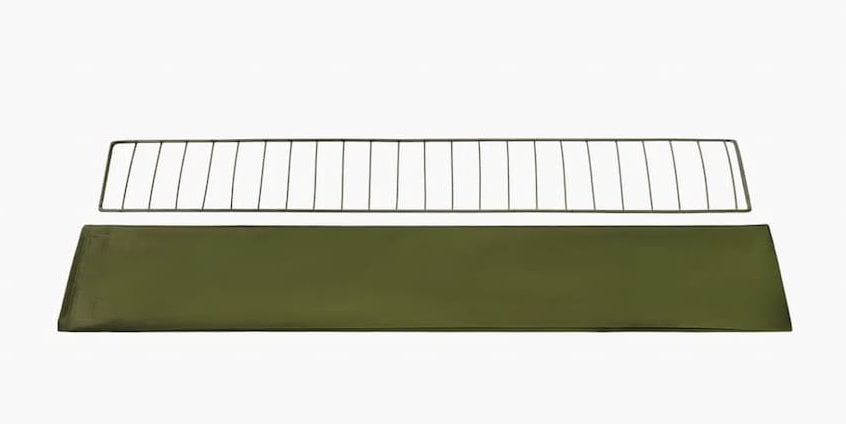
The Kramer wire splint is one of the most popular immobilisation devices in trauma and emergency care. Thanks to its simple but effective design, it allows for secure fixation of an injured limb or other body part, minimising the risk of further complications and providing maximum comfort for the patient.
The Kramer splint consists of a rectangular metal frame made of wire with a diameter of 4-5 mm. Thinner wire bridges (about 2 mm in diameter) are located transversely on the frame with a 2-3 cm gap between them. This design makes the tyre look like a ladder, which is why it is called a ‘ladder’ tyre.
One of the main advantages of this splint is its flexibility and the possibility of easy modification to the patient's specific anatomical features. It can bend and take any shape required, following the contours of the body, which ensures a snug fit and effective immobilisation.
Kramer splints are available in different lengths - from 60 to 120 cm, which allows you to choose the best option depending on the location of the injury and the required level of fixation. If necessary, the splint can be cut or lengthened by connecting several elements.
The Kramer splint is widely used for fractures, dislocations, sprains and other injuries of the extremities. It effectively prevents the displacement of bone fragments, which is important for proper tissue fusion and pain relief.
Kramer splints also have several advantages:
- Simplicity of design - no complicated tools are required for use;
- Flexibility - can be easily modelled to suit anatomical features;
- Versatility - suitable for injuries of different parts of the body;
- Affordability - an inexpensive and widely available means of immobilisation;
- Reliability - provides stable fixation of the injured area, which reduces the risk of complications.
The Kramer wire splint is an indispensable element in the practice of any medical facility and in the arsenal of ambulance crews. Its simplicity, effectiveness and versatility allow for a quick response to traumatic events and provide patients with proper care before they arrive at the hospital.
Dieterichs splint
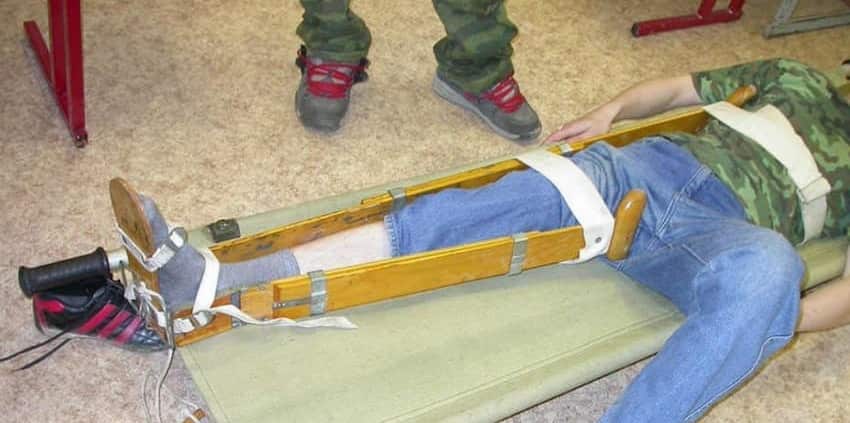
The Dieterichs splint is one of the most reliable means of immobilising the lower limb in case of serious injuries such as hip fractures, hip and knee injuries, and upper leg injuries.
Its main advantage is the ability not only to fix the limb but also to provide traction, which significantly reduces the risk of displacement of bone fragments.
The splint consists of several main elements:
- Two wooden crutches (branches) - long wooden bars that run along the limb.
- Sole - fixes the foot and keeps it in the required position.
- Twist with a band - allows you to adjust the tension, ensuring the extension of the limb.
- Axillary and perineal supports - the upper parts of the brace that provide additional fixation and prevent the splint from shifting.
The Dieterichs splint allows immobilising the limb along its entire length, which is critical in case of femur fractures or damage to large joints.
The splint has been widely used in the treatment of open fractures, as it provides reliable immobilisation, reducing the risk of infection and complications. Its design can withstand a significant load, which allows it to be used even in severe injuries.
The Dieterichs splint is highly effective in complex fractures, providing reliable fixation of the limb and the possibility of extraction. The simplicity of its design and durability allow it to be used in a variety of conditions, including cases with serious injuries.
However, the disadvantages include a relatively high cost compared to other types of splints, as well as significant weight and bulkiness, which sometimes makes it difficult to transport and store. Nevertheless, its effectiveness and reliability make the Dieterichs splint an indispensable tool in medical practice.
The Dieterichs splint remains an important tool in trauma and emergency care. Its effectiveness in treating serious lower extremity injuries makes it indispensable for ambulance crews and medical facilities. Despite certain drawbacks, its reliability and ability to provide limb traction ensure that it is widely used in modern medicine.
Pneumatic tyres
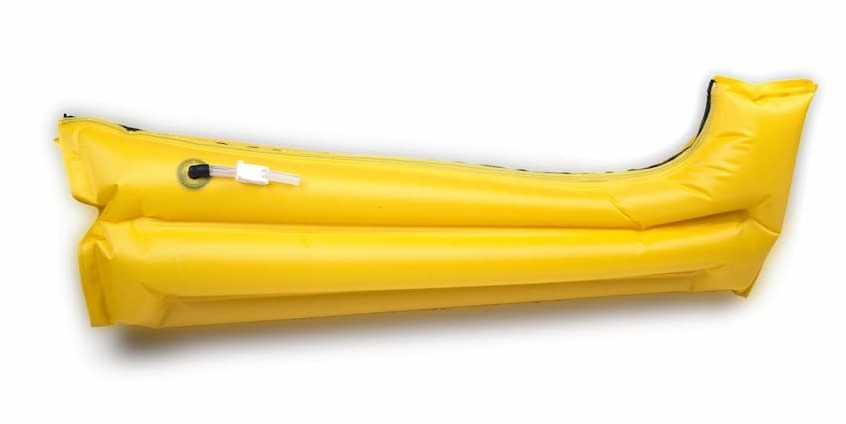
Pneumatic splints are one of the most innovative and effective means of transport immobilisation of injured limbs. Due to their design, they provide uniform pressure on the tissues, which minimises the risk of pressure ulcers and reduces patient discomfort.
The main feature of pneumatic splints is that they automatically mould to the shape of the injured limb when inflated with air. When the splint is filled, it fits perfectly to the injured area, providing reliable fixation and stabilisation. Due to the even distribution of pressure, tissues are protected from compression, which contributes to comfortable and safe patient transport.
The pneumatic splints are made of durable polymeric materials and consist of a double-layer sealed chamber, a valve device for air injection and a zip fastener.
When deployed, the splint is placed under the injured limb, then fastened and inflated with air until the required stiffness is achieved. The overpressure inside provides stability and prevents movement of the limb, which is key to preventing further complications.
Despite their many advantages, pneumatic splints have certain limitations. They are not suitable for immobilising the shoulder and hip joints, as they cannot provide proper fixation of these areas. However, for injuries to the lower and upper extremities, pneumatic splints are an indispensable tool that is widely used both in ambulances and in the field.
Due to their ease of use, high efficiency and patient comfort, pneumatic splints have become an important element in modern medicine. Their use greatly simplifies the process of providing first aid and transporting injured people, making them an indispensable tool for emergency teams and rescuers.
Basic rules for applying splints to limbs
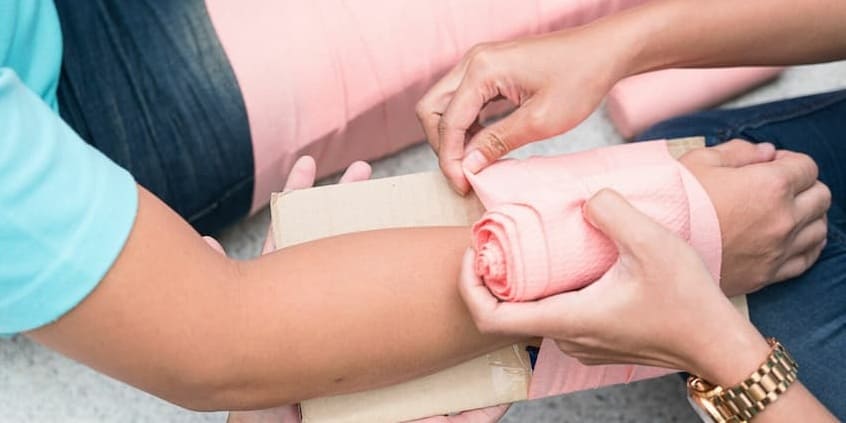
Correct splinting is a critical step in providing first aid for fractures, dislocations or other injuries to the limbs. The accuracy of the fixation not only reduces pain but also prevents further displacement of bone fragments and the development of complications. Adherence to the basic rules of splinting allows you to effectively immobilise the limb and ensure safe transportation to a medical facility.
Before applying a splint, it is necessary to carefully examine the injured limb, assess the extent of the injury and determine the nature of the injury. In the case of an open fracture, it is important to treat the wound with an antiseptic and apply a sterile dressing to prevent infection.
A splint should be applied to the limb so that it covers the joints above and below the fracture site. This ensures maximum stability and prevents movement of the injured area. Before applying the splint, it should be prepared - adjusted to the size, bent or placed on a soft material to reduce pressure on the tissues.
The limb should be fixed in the position it assumed after the injury, without trying to correct or align it. In case of a fracture, it is important to be extremely careful not to aggravate the condition of the victim. The splint is applied over the clothing, which helps to retain heat and minimises the risk of soft tissue damage.
The splint is fixed with bandages, belts or special fasteners. It is important to make sure that the bandage is not too tight, as this can lead to poor blood circulation and swelling. After applying the splint, check the sensitivity of the limb: the patient should not feel numbness or severe pain, which indicates improper fixation.
Basic principles of splinting:
- Fixation of two joints - the splint should cover the joints above and below the injured area.
- Maintaining the position of the limb - the injured limb is not levelled, but fixed in the position it is in.
- Splint preparation - the splint should be adapted to the shape of the limb to minimise discomfort.
- Fixation over clothing - this provides additional protection of tissues from compression.
- Checking blood circulation - after applying the splint, it is necessary to make sure that the limb has normal blood circulation and has not lost sensation.
After splinting, the patient should be transported to a medical facility as soon as possible for diagnosis and further treatment. It is important to monitor the condition of the injured limb during the entire period of transport to avoid complications.
Compliance with these simple but important rules significantly reduces the risk of additional damage and ensures effective immobilisation, which is a key factor in providing quality medical care.
Improvised immobilisation equipment
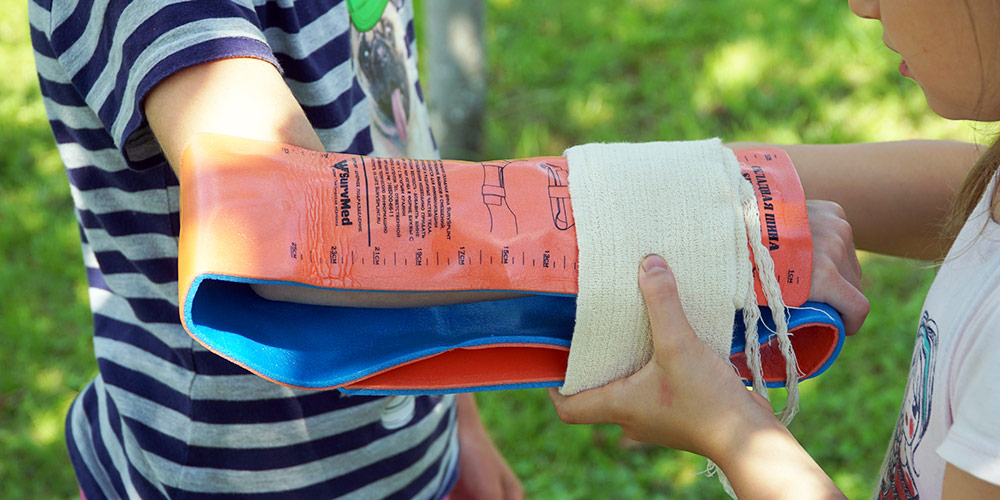
In situations where standard immobilisation equipment is not available, it is important to be able to use improvised materials to provide first aid.
Any solid object that can provide fixation of the injured limb can be used: tree branches, sticks, boards, skis, ski poles, pieces of cardboard, plywood or even sapper blades. The main rule is that the chosen tool should be strong and long enough to cover at least two joints located above and below the fracture site.
Before applying a makeshift splint, it is important to take care of the victim's comfort and safety. Soft padding should be placed between the limb and the hard surface of the improvised splint - it can be a folded cloth, cotton wool or gauze. In places where the splint comes into contact with sensitive areas, such as the joints or groin, it is recommended to use thicker layers to prevent pressure and damage to soft tissue.
When immobilising the shoulder with sticks or boards, certain rules must be observed. The upper end of the splint should reach the armpit on the inner side and extend beyond the shoulder joint on the outer side. The lower ends of the splint should extend beyond the elbow.
After the improvised splint is applied, it is fixed with straps or bandages above and below the fracture site to ensure maximum stability. The forearm is suspended from a headscarf for additional support and to reduce the load on the injured area.
The use of improvised materials allows for quick and effective stabilisation of the injured limb until medical assistance arrives. The ability to properly use such materials is an important element of first aid, especially in the field or remote areas where there is no access to standard medical devices.
Conclusion
Immobilisation splints are an indispensable element in a military first aid kit, providing quick and effective assistance in combat or field conditions. Limb injuries are one of the most common injuries on the battlefield, so having a reliable means of fixation can be a decisive factor in preserving a soldier's life and health.
The use of splints helps to minimise pain, reduce the risk of additional injuries and preserve the functionality of the limbs until qualified medical care is provided. Military tyres should be lightweight, durable and easy to use, as the speed of application and adaptation to a specific injury is crucial in emergency situations.
Versatile models, such as the Kramer or pneumatic tyres, are particularly valuable, as they can be used for different types of injuries. In critical conditions, when standard medical supplies are not available, improvised materials allow you to immobilise a limb, which is an important skill for every military.
Tyres in a military's first aid kit are not just an item of equipment, but a tool that helps to maintain the unit's combat capability and saves lives. The availability and ability to use tyres correctly increases the chances of successful transportation of the wounded with minimal health consequences.

